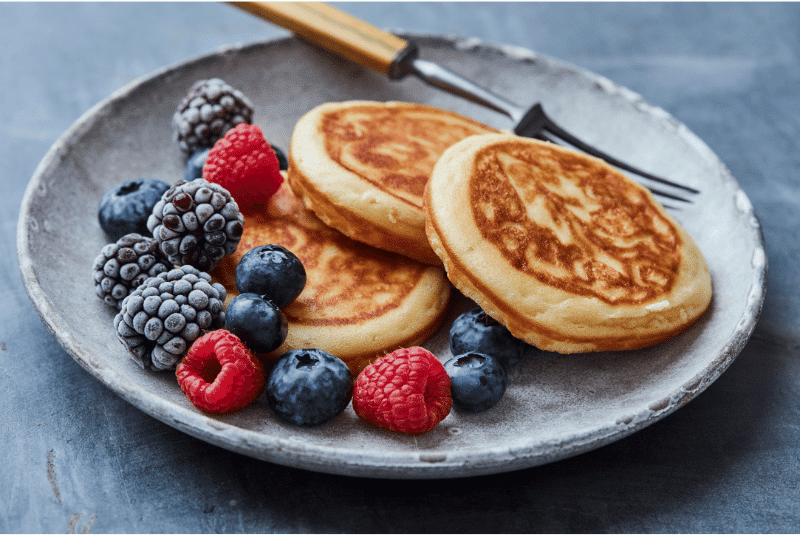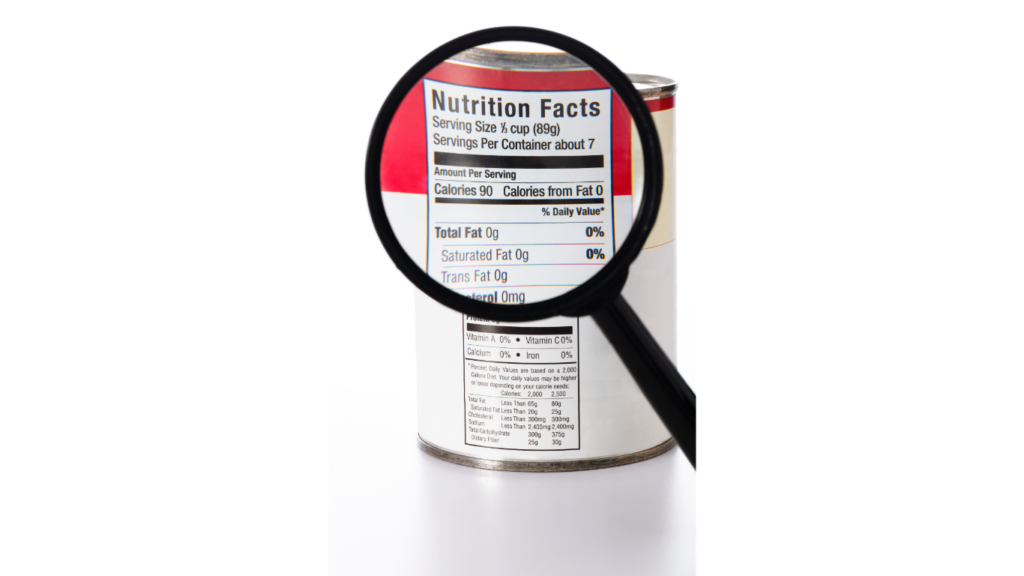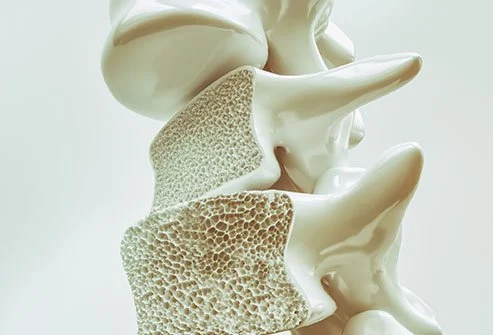Beurer IL50 Infrared Heat Lamp, Soothing Heat For Colds And Muscle Tension, Infrared Light Therapy with 300 watts, Improves Blood Circulation, 100% UV Blocker, Medical Device

SOOTHING WARMTH: Infrared heat therapy stimulates blood circulation to boost your body’s natural healing process and reduce inflammation
INFRARED HEAT THERAPY: Soothing heat for colds and to relax tense muscles, reduce chronic pain, and improve range of movement
WELLBEING: Soothing infrared heat can be used to combat colds, tensions & muscle soreness, all while improving blood circulation and felxibility
Celebrating World Porridge Day: A Nutritional Delight! 🥣

Porridge – We Love Ya!… Porridge, the ultimate comfort food, is deservedly taking the spotlight on October 10th as we celebrate World Porridge Day! As a leading Dietitian, I’m thrilled to share the wonders of this versatile dish with you. So lets celebrate health together with why you should eat poridge! Why Porridge Rocks: Nutrient Powerhouse: Porridge is packed with essential nutrients like fibre, vitamins, and minerals, making it a perfect start to your day [1]. Heart Health: Its soluble fiber content helps lower cholesterol levels, promoting a healthy heart. Did you know porridge oats are wholegrains and contain a soluble fibre called beta-glucan, which can help lower your cholesterol level if you have 3g or more of it daily, as part of a healthy diet. (A 40g serving of porridge oats contains 2g of beta-glucan.) Energy Boost: Porridge provides a steady release of energy, keeping you fueled and focused throughout the day – no reaching for the snacks straight after breakfast. Customizable: Sweet or savoury -using fruits, nuts and spices, you can personalize your porridge, add to soups/sauces making it a versatile and tasty treat. Celebrate with a Porridge Party! Let’s turn World Porridge Day into a memorable event! Gather your friends, schoolmates, or community members for a Porridge Party. Share recipes, swap ideas, and savor different porridge variations. Don’t forget to capture the moments and spread the joy on social media using #PorridgeDayCelebration! A Porridge Recipe we at 121 Dietitian love… Oat Fibre Pancakes 1 large ripe banana 1-2 eggs depending on size 1/4 cup (can use gluten-free) oats (blitz in a blender for smoother flour consistency) 1tbsp of milled flaxseed 1 tbsp chia seeds pinch of salt pinch of cinnamon 1 spoon almond butter (optional) butter for cooking InstructionsMash the banana with a fork, break and whisk in the eggs, oats, salt seeds and cinnamon until smooth. Add the nut butter and swirl into the batter.Heat a teaspoon or oil/butter in a pan over medium-low heat. Cook for about 2 minutes, on medium heat until set. Cook on the other side for another 30 seconds.Serve with berries. Enjoy! Let’s make this World Porridge Day a celebration of health, taste, and togetherness! Happy porridge-making, everyone! 🌐 Sources AwarenessDays – World Porridge Day 2023 NetworkLeeds – Celebrate World Porridge Day with Mary’s Meals National Today – World Porridge Day Twinkl – World Porridge Day 2023 | Teaching Resources Chelmsford Star Cooperative – Celebrate World Porridge Day
Understanding Nutritional Labels: A Comprehensive Guide

Nutritional labels on food products are often dense with information, often eligible in tiny writing and finding the right translation can take forever! Despite all these hurdles deciphering them correctly is vital for making informed dietary choices. Gillian Killiner Consultant Dietitian is an expert in this field and understands the significance of this task. In this blog Gillian provides a comprehensive guide on how to read nutritional labels correctly. In this detailed breakdown, she will walk you through the intricate details of nutritional labels, ensuring that you can make healthier choices with confidence. Decoding the Serving Size The first crucial aspect of any nutritional label is the serving size. This seemingly basic piece of information holds the key to understanding the rest of the label. It’s not just about how much you are eating but how much the manufacturer considers a standard serving. Keep an eye out for this information, often presented in both familiar units like cups or pieces and grams for precise measurements. A nice shop bought buttercream sponge is a great example! 490g in weight its pretty petite coming out of the box. If generous you may cut this into 4 big pieces to enjoy with others or if needing it to stretch maybe 6 pieces seem about right. However the nutritional recomendations per portion are calculated for 8 slices! and for 1/8th of the cake you are consuming 250kcals, 11.5g fat, 2.5g protein, 33g carbohydrates, 21g sugar, 0.7g fibre, 0.4g salt. You can see how easy it is to underestimate your intake if not checking the portion size! Cut into 4 generous portions and wow you have a little piece of cake with a lot of fat, sugar and energy! Calories: Understanding the Energy Content on a Nutritional Label Calories (kcals) provide your body with energy, but it’s important to note that not all calories are created equal. The caloric content on a nutritional label represents the energy you’ll get from one serving of the product and as mentioned above these can be deceiving! I actually am not a fan of kcal counting – it can be useful but only if you are completely new to all of this and only for a short few weeks to get you thinking. Kcal counting is not enjoyable can be very stressful and for some not actually address the food choices. You can eat a lot of rubbish food and be below your kcal requirements. Yes you will lose weight if you count and lower your intake and eat well – this has to be for life so it needs to suit you, taste good, fit with your lifestyle and your bank balance. Fats: The Good and the Bad Dive deeper into the fats section. Not all fats are detrimental to your health. Total Fat includes both unsaturated (good) and saturated (bad) fats. Look for products with low saturated fat content and higher unsaturated fats like monounsaturated and polyunsaturated fats. Additionally, keep an eye on Trans Fat, which should ideally be zero, as even small amounts can be harmful. Carbohydrates: The Body’s Primary Energy Source Carbohydrates are your body’s primary energy source, but not all carbohydrates are equal either. Dietary Fibre and Sugars are two components to watch out for. Fibre aids digestion and is beneficial for heart health, while excessive sugar intake can lead to various health issues. Opt for products high in fibre and low in added sugars for a healthier choice. Proteins: Building Blocks of Life Proteins are essential for building and repairing tissues. The Protein section tells you how much protein is in one serving. Whether you’re a fitness enthusiast or simply looking to maintain a balanced diet, an adequate protein intake is vital. Choose products with a higher protein content to support your body’s needs. The range is from 0.8g protein per kg/ideal weight/day to 2g protein per kg/ideal weight/day. Vitamins and Minerals: Nutrients for Overall Well-being Nutritional labels often list essential vitamins and minerals as a percentage of the Daily Value (% DV). These values indicate how much a nutrient in a serving of food contributes to a daily diet. Vitamin D, Calcium, Iron, and Potassium are nutrients commonly displayed. Pay attention to these values, especially if you have specific dietary requirements or deficiencies. Reading the Ingredient List on a Nutritional Label Apart from the nutritional facts, examining the Ingredient List is really important. As highlighted you can eat a lot of unhealthy fillers, artificial sweeteners and be in a kcal deficit. Is this good for you long term? In my near 30yrs in the world of nutrition the answer is a big NO. Ingredients are listed in descending order by weight. If the first few ingredients include unhealthy elements like high-fructose corn syrup or hydrogenated oils, you might want to reconsider your choice. Opt for products with easily recognizable, natural ingredients. Allergens and Special Dietary Needs Manufacturers are obligated to highlight common allergens like nuts, soy, or gluten. If you have allergies or follow a specific diet (such as gluten-free or vegan), thoroughly check this section to ensure the product aligns with your dietary requirements. Items eg: dried beans, pulses, herbs, spices, cereals, deli, fresh produce can be difficult to get full disclosure on the allergy risk. Sticking to the food product guide in your allergy official membership will be helpful or contact the manufacturer of the product if you really want to eat something and you feel it may be bad labelling rather than a product issue. Conclusion: Empowering Your Food Choices In conclusion, understanding how to read nutritional labels empowers you to make healthier food choices. By deciphering serving sizes, grasping the differences in fats and carbohydrates, recognizing the importance of proteins, and being aware of essential vitamins and minerals, you can navigate the complex world of nutrition with a little more confidence. Labels are regularly altered as ingredients change so do keep an eye on them! A well-informed consumer is a healthier consumer. If you want to book
OSTEOPOROSIS – PREVENT AND REVERSE with DIET & LIFESTYLE TOP TIPS

Reverse Osteoporosis Through Diet Osteoporosis is a silent but prevalent disease that affects millions of people worldwide. In this blog post, l explore the critical aspects of osteoporosis prevention and reversal through diet and lifestyle changes. Join me, Gillian Killiner, a world renowned registered dietitian with over 26 years of experience, as we delve into this essential topic that impacts the lives of millions. Understanding Osteoporosis Osteoporosis is a condition characterized by the thinning of bones, resulting in reduced bone density. Our bones consist of a matrix that resembles a honeycomb, and they need to be strong and flexible to support our bodies effectively. Most people will reach their peak bone mass between the ages of 25 and 30. By the time we reach age 40, we slowly begin to lose bone mass. However, various factors, including genetics, medications, lifestyle choices, menopause and aging, can lead to a decrease in bone density. The Role of Bone Cells Two types of cells primarily regulate our bone health: osteoclasts, responsible for breaking down bone tissue, and osteoblasts, which build new bone tissue. As we age, osteoclasts often outperform osteoblasts, leading to less stable and less dense bones, making them more prone to fractures. Lifestyle Changes for Stronger Bones In the UK over 3 million people are estimated to have osteoporosis and there are estimated to be over 500,000 fragility fractures that occur in the UK each year. This does not have to be the case. Ensuring proper bone health involves making important lifestyle changes. We know it can be challenging in our modern world, as it is not highly conducive to maintaining strong bones. But we all need to act. The figures are rising as more and more people are developing poor bone health at a younger age. Below are a few key factors to consider: 1. Exercise to prevent Osteoporosis It is SO easy to not get regular physical activity. We need to be active every day, and as we get older (30+) focusing especially on weight-bearing exercises and weight lifting, as these play a pivotal role in maintaining bone density. For years, cardio workouts were the go-to for fitness, but research has highlighted the importance of weight-bearing exercises, especially for women. Just 30 mins per day is a good way to keep bones happy. 2. Alcohol Consumption While moderate alcohol consumption may offer some health benefits, excessive and regular drinking can negatively impact bone health. It reduces calcium stores, affecting calcium balance and weakening bones. Furthermore, frequent intake alcohol can also impair the production of vitamin D in the body. Vitamin D is essential for proper calcium absorption and utilization by bones. When vitamin D levels are inadequate due to excessive drinking, it further contributes to the negative impact on bone health and when alcohol is consumed in excess of food it can replace essential nutrients in your diet, further jeopardizing bone density. 3. Caffeine Intake Who doesn’t love a Tea or Coffee! Caffeine is prevalent in various every day beverages and foods, including energy drinks, and desserts. Caffiene in safe amounts can keep you focused and helpful for stimulating your brain, muscles and bowel. However when we consume too much caffeine, it can interfere with our body’s ability to absorb calcium properly. High levels of caffeine lead to increased urinary calcium excretion, meaning that more calcium is being excreted out of the body through urine instead of being absorbed and utilized by our bones and muscles. Over time, this disruption in calcium balance, caused by excessive caffeine intake, can have detrimental effects on our long-term muscle and bone health. Inadequate levels of calcium can weaken bones and increase the risk of fractures or osteoporosis. Additionally, insufficient calcium availability for muscles may lead to decreased muscle strength and endurance. 4. Sodium (Salt) Consumption Salt is a common ingredient in many processed and hidden foods. Consuming a diet rich in processed foods, takeaways, and fast food can lead to excessive salt intake. Calcium homeostasis is essential for maintaining healthy bones and overall bodily functions. The body tightly regulates calcium levels through a complex interplay between various hormones and organs. However, excessive salt intake can disrupt this delicate balance. Research suggests that high salt intake can stimulate the secretion of PTH from the parathyroid glands. PTH acts on the bones to release stored calcium into the bloodstream, thereby increasing blood calcium levels. This process is known as bone resorption or turnover. When bone turnover is increased due to elevated PTH levels, it can lead to accelerated bone loss over time. This puts individuals at a higher risk of developing osteoporosis or other related bone disorders. Moreover, it may also contribute to an increased risk of fractures. Nutrients for Strong Bones I have for the past 15+ years been helping patients improve their bone health, osteopenia and osteoporosis. Recent research reassures us that it may be possible to rebuild bone density and achieve osteoporosis reversal through a combination of lifestyle changes, such as exercise and diet, and medical interventions. Menopause can be a time when bone decline accelerates and a diagnosis of osteoporosis can be a shock. I see many many ladies very upset and worried. There is much to do at this time so if you are reading this saying this is me – be positive and start making changes today. To ensure your bones stay strong and healthy, consider incorporating the following nutrients into your diet: 1. Calcium Calcium is a fundamental building block for bones, constituting 99% of bone mineral. Dairy products like yogurt, cheese, and milk are excellent sources of calcium. However, plant-based options such as tofu, tempeh, green vegetables, seeds, and nuts also provide this essential nutrient. 2. Vitamin D Vitamin D is essential for calcium absorption into the bones. In regions with limited sunlight exposure, supplements may be necessary to meet your vitamin D requirements. You can also find vitamin D in oily fish, eggs, and certain mushrooms. 3. Zinc Zinc, crucial for immune function, also plays
How to Lose Weight for Good

Effective Fat Loss Tips and Advice Introduction Hey everyone, this is the month to lose weight if you need and can! Yes you heard it! I have written about this countless times in blogs, magazines, papers and spoken on YouTube so apologies if you have heard this before, but I feel the New Year is not always the best time to embark on weight loss. It is a time of post stress, irratic blood sugars, low mood, no money, poor light, cold…. The time you want to stay warm and de-stress and nourish yourself physically and mentally. I strongly encourage after the summer months to refocus and commence a positve change. Did you know It takes 21 days to embed a new routine. How many embark on numerous weight loss journeys in January, only to find you are trapped in a cycle of losing and gaining weight, with little long-term success and give up by February. It’s a frustrating and disheartening experience that has I know left countless individuals feeling defeated. SO in this blog post, I aim to shed light on a different approach – one that is sustainable, enjoyable, and designed to help you lose weight for good. Do check out my YouTube Video on this very topic also. https://www.youtube.com/watch?v=nCXxQzxWpFs The Fear of Weight Loss I know many of you dread changing your diet to lose weight because you associate it with tasteless, unappetizing food? Others start a new diet regimen every morning, only to feel like a failure by bedtime. If this resonates with you you are not alone in these feelings. Many people have good intentions when it comes to weight loss, but they often encounter challenges that prevent them from achieving lasting results. The key is to recognize that weight loss doesn’t have to be a daunting experience; it can be a manageable and enjoyable part of your life and when you get it right, it should be flexible to work with you for good. The Pitfalls of Counting Calories and Macros to Lose Weight One common misconception about weight loss is the need to meticulously count calories and macros (macronutrients like protein, fat, and carbohydrates). While it’s essential to have a general understanding of your dietary intake, obsessively tracking these values is neither required nor sustainable in the long term. Constant monitoring can lead to frustration and dissatisfaction, taking away from the joy of eating and making it feel like a never-ending journey. Weight management should be a lifelong commitment, not a short-lived obsession. Learning takes time and so does long term successful weight loss. Commercial Weight Loss Programs – Do They Work? Commercial weight loss programs/products have their place in the industry and may yield short-term success for some individuals who are at high risk to get them to a safe place. However, for those who really don’t need them, they can trap you in a cycle of dependency on their products and quick fix guidance. Over time, this reliance can lead to a bigh expense and if not teaching you about real food will still ensure you have a lack of understanding over dietary choices -perfect for making it more confusing and leave you with no control. The initial results with any diet change can give results, but if extreme they can be very hard to maintain without supervision. We see this time and time again here at 121 Dietitian, many people come to us having regained the weight they lost and more and no idea what to do next. It’s essential to explore alternative approaches that empower you to take control of your health. Yo-Yo dieting is a NO-NO. Preparing for a Sustainable Weight Loss Journey Before embarking on a weight loss journey, it’s crucial to prepare yourself mentally and practically. Avoid falling into the trap of quick-fix solutions, as they often result in muscle loss and metabolic slowdown. Instead, set aside at least two months of your life when you can fully commit to changing your eating habits and lifestyle. This period should be free from major life changes like moving, changing jobs, or planning significant events like weddings. Sustainable weight loss requires a gradual, thoughtful approach and Autumn can be one of those perfect times. Understanding the Factors Behind Obesity Weight management is not solely about controlling your appetite and calorie intake. Several factors contribute to obesity, including your environment, emotions, impulsiveness, and early life experiences. Your surroundings play a significant role in your dietary choices. In our workd today we have a toxic environment filled with temptation. Fast food and processed snacks can lead to unhealthy habits, while a supportive environment can foster better choices. Our programmes guide you through the various trigger areas to tackle and allow you to get to a sustainable place without feeling one bit deprived. Expanding Your Food Choices to Lose Weight In a world with an abundance of food options, it’s still easy to fall into a routine of repetitive, restricted eating. Many individuals unknowingly limit their choices to a narrow range of foods, often favouring processed, unhealthy options. You may be surprised to learn that this could be becuase your gut bacteria is in control!! It’s essential therefore to broaden your palate and embrace a diverse range of nutritious foods. Start by making a list of your likes and dislikes, and identify areas where you can incorporate healthier alternatives or develop a taste for nutritious options. We would love to help you with that. Keeping a Food Diary Maintaining a food diary can be a valuable tool on your weight loss journey. In addition to documenting your meals, include details about your activities, sleep patterns, mood, and energy levels. A comprehensive diary helps you gain insight into your eating habits and their impact on your overall well-being. It serves as a mirror, reflecting your daily routine, making it easier to identify areas for improvement. You can complete a 7 day food diary and submit this alongside our questionnaire, this is
Eating Well on a Budget: 5 Nutrient-Rich Hacks for Optimal Health

Eating Well on a Budget Eating on a budget. Well, I don’t know about you but I seem to be working harder and feeling poorer. Every time I go shopping the price of food has gone up. It’s a real worry, not just for now, but for our families’ future health, young and old. In the midst of challenging economic times, prioritizing a nutritious diet may feel overwhelming. However, maintaining a healthy eating plan is so important for safeguarding your overall health and well-being. While it may seem difficult, there are thankfully some practical strategies and resources available to help you achieve this goal without breaking the bank. By being aware of proper nutrition and exploring affordable options, you can ensure that everyone consumes the essential nutrients they need while navigating through these tough times. As a registered Dietitian with over 26 years of experience, I understand the concerns regarding budget constraints and its potential impact on food choices. That’s why I wish to share five practical and budget-friendly ideas to ensure you’re getting sufficient energy, protein, and antioxidants without breaking the bank. Embrace Affordable Protein Sources Protein is a vital nutrient that helps repair and build tissues and keeps you feeling full and satisfied. However, it can be very expensive or very poor quality depending on what you buy. Protein is an essential nutrient that plays a crucial role in our overall health and well-being. It is responsible for repairing and building tissues, supporting muscle growth, and aiding in the production of enzymes and hormones. Additionally, protein can help regulate appetite by promoting feelings of fullness and satisfaction. However, the cost and quality of protein sources can vary significantly depending on what you buy. It’s important to be mindful when selecting protein-rich foods or supplements to ensure you are getting the most value for your money while also prioritizing quality. When it comes to purchasing protein, there are several factors to consider. Firstly, the source of protein matters. Animal-based proteins such as meat, poultry, fish, eggs, and dairy products tend to be more expensive compared to plant-based sources like legumes (beans, lentils), tofu, tempeh, nuts, and seeds. Additionally, it’s crucial to pay attention to the quality of the protein you consume. Some cheaper options might contain additives or fillers that lower their nutritional value. Opting for leaner cuts of meat or choosing whole food sources can help ensure you’re getting high-quality protein without unnecessary additives. Checking product labels before purchasing will allow you to strike a balance between affordability and ensuring optimal nutritional value from your chosen source of protein intake. Economical good protein sources which can be added to bulk out a meat meal include lentils, beans, chickpeas. Quorn and tofu or are excellent on their own or in addition to other proteins. These plant-based options are cost-effective and rich in fibre, essential for gut health. Additionally, consider buying 100% frozen chicken or canned oily fish for more affordable animal protein choices. Nut butter, Eggs, and cottage cheese are also good value proteins to use in meals and snacks. Harness the Power of Frozen and Canned Produce While fresh fruits and vegetables are excellent, frozen and canned varieties can be more budget-friendly without compromising nutrition. These options are harvested at their peak and retain essential nutrients. Look for canned fruits in juice and vegetables with no added salt to minimise unnecessary additives. You can also buy in bulk during sales and store them for extended use. I spend more money than I would like on fresh fruit and vegetables but I consider these an investment for my families health. They are our natural treat foods so my money is not spent on biscuits, cakes, sweets etc a big expense also but devoid of healthy nutrients and inflammatory. Bulk Up with Whole Grains Whole grains like brown rice, oats, and whole wheat pasta are inexpensive and nutrient-dense. They provide lasting energy and essential vitamins and minerals. Buying in bulk is often cheaper, and these staples can be the foundation of many budget-friendly meals. Whole grains, such as brown rice, oats, and whole wheat pasta, are not only delicious but also highly beneficial for our overall health. These nutrient-dense foods offer a myriad of advantages that make them a valuable addition to any diet. One of the key benefits of whole grains is their affordability. Compared to processed and refined alternatives, whole grains are often more budget-friendly. Purchasing them in bulk can lead to even greater savings, making them an excellent choice for those looking to maximize their grocery budget. In addition to being cost-effective, whole grains provide lasting energy. They are rich in complex carbohydrates that break down slowly in the body, providing sustained fuel throughout the day. This makes them an ideal option for individuals seeking long-lasting energy without experiencing sudden spikes or crashes. Whole grains are packed with essential vitamins and minerals. They contain B vitamins like thiamin, niacin, and folate which play a crucial role in metabolism and maintaining healthy brain function. Additionally, they are a great source of minerals such as magnesium and selenium which contribute to various bodily functions including bone health and immune system support. Finally, incorporating whole grains into your meals can be incredibly versatile and cost-effective. With a little creativity in the kitchen, you can use these staples as the foundation for numerous budget-friendly dishes. From hearty grain bowls to wholesome pasta salads or nourishing porridges – the possibilities are endless. Create Flavourful Meals with Herbs and Spices Enhance the taste of your dishes without relying on expensive ingredients by using herbs and spices. Not only do they add depth and complexity to your meals, but they also boast antioxidants that support your immune system. Herbs and spices are not only culinary delights, but they also offer a multitude of health benefits. By incorporating these flavorful ingredients into your dishes, you can enhance the taste without breaking the bank on expensive ingredients. Herbs such as basil, thyme, rosemary, and oregano